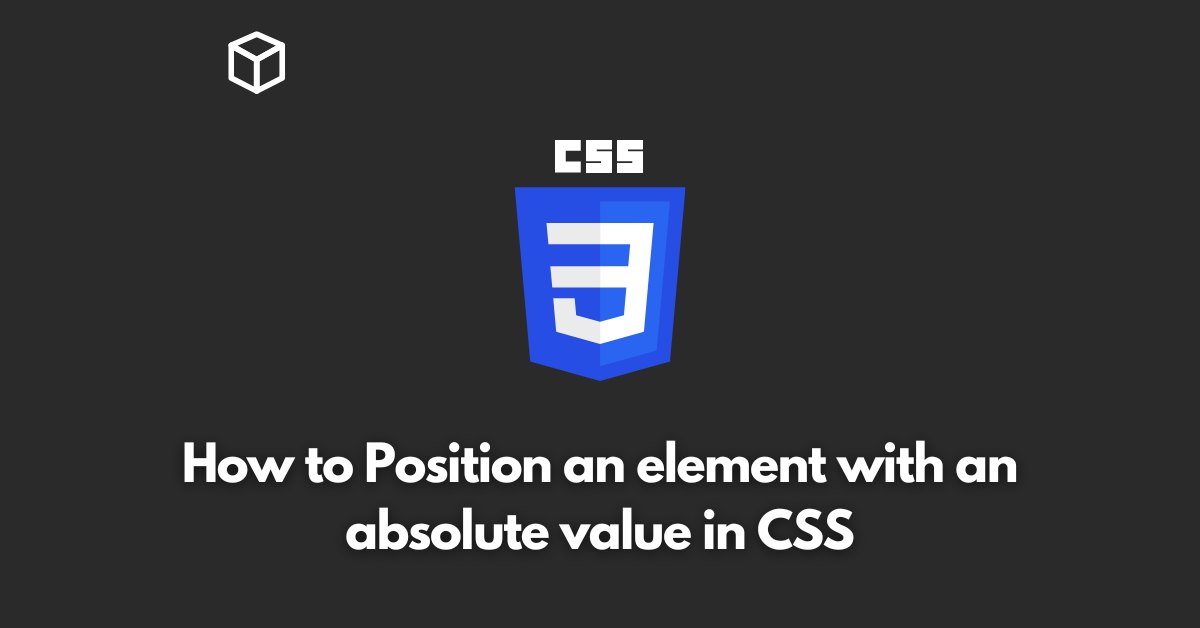When it comes to creating visually appealing and well-designed websites, the use of CSS (Cascading Style Sheets) is crucial.
CSS allows developers to control the layout and appearance of web pages, including the positioning of elements on the page.
One of the ways to position elements on a web page is through the use of absolute values in CSS.
In this CSS tutorial, we will dive into the concept of absolute values in CSS and how they can be used to position elements on a web page.
We will also cover some best practices and tips for using absolute values to create a visually pleasing and user-friendly website.
What are Absolute Values in CSS?
In CSS, an absolute value refers to a fixed position on the web page.
When an element is positioned using absolute values, it is removed from the normal flow of the web page and positioned in a specific location, regardless of the other elements on the page.
This means that the position of the element will not change when the other elements on the page are moved or resized.
Absolute values can be used to position elements in relation to the top, bottom, left, and right edges of the web page, or in relation to a parent element.
How to Position Elements with Absolute Values in CSS
The first step in positioning an element with absolute values in CSS is to set the position property to “absolute”.
This tells the browser that the element should be positioned using absolute values.
Next, you can use the top, bottom, left, and right properties to specify the position of the element.
For example, if you want to position an element 20 pixels from the top of the web page, you would use the following code:
.element {
position: absolute;
top: 20px;
}You can also use negative values to position an element outside of the visible area of the web page.
It’s also possible to position elements in relation to their parent element by setting the position property of the parent element to “relative” and then using the top, bottom, left, and right properties to specify the position of the child element.
For example, if you want to position an element 20 pixels from the top of its parent element, you would use the following code:
.parent {
position: relative;
}
.child {
position: absolute;
top: 20px;
}Best Practices and Tips for Using Absolute Values in CSS
While absolute values can be a powerful tool for positioning elements on a web page, it’s important to use them judiciously.
Here are some best practices and tips to keep in mind when using absolute values in CSS:
- Use absolute values sparingly. Overuse of absolute values can make your web page difficult to maintain and can lead to unexpected behavior when the web page is resized or viewed on different devices.
- Use relative units (such as percentages or ems) instead of absolute units (such as pixels) whenever possible. This will make your web page more responsive and adaptable to different screen sizes and resolutions.
- Be mindful of the z-index property when using absolute values. The z-index property controls the stacking order of elements on the web page and can affect how elements are displayed when they overlap.
- Always consider the user experience when positioning elements on the web page. The goal should be to create a visually pleasing and user-friendly website.




